
Goniatites is a genus of extinct cephalopods belonging to the family Goniatitidae, included in the superfamily Goniatitaceae. Hibernicoceras and Hypergoniatites are among related genera.
Anasibirites is an extinct genus of ammonoid cephalopod from the lower upper Smithian Wasatchites distractus Zone.
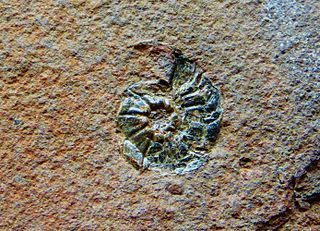
Asklepioceras is a genus in the Ceratitid family Arpaditidae from the Middle and Upper Triassic of Italy, Romania, Turkey, and British Columbia (Canada).
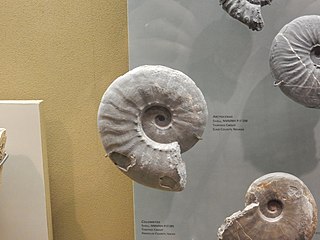
Arctoceras is a genus of ceratitid ammonoids from the Lower Triassic with a moderately narrow discoidal shell and ceratitic suture.

Dictyopyge is an extinct genus of prehistoric freshwater bony fish. Two species are recognized, D. macrurus and D. meekeri, which both lived during the Carnian age in what is now Virginia, United States.

Cenoceras is an extinct genus within the cephalopod mollusc family Nautilidae, which in turn makes up part of the superfamily Nautilaceae. This genus has been described by Hyatt in 1884. The type species is Cenoceras intermedium, which was originally described by Sowerby 1816 as Nautilus intermedius.
Clydonitoidea, formerly Clydonitaceae, is a superfamily in the ammonoid cephalopod order Ceratitida characterized by generally costate and tuberculate shells with smooth, grooved, or keeled venters and sutures that are commonly ceratitic or ammonitic but goniatitic in a few offshoots.

The Trachyceratidae is an extinct family of ceratitid ammonoid cephalopods.
Lecanites is a ceratitid genus assigned to the Danubitaceae, with an essentially smooth, evolute, discoidal shell and a goniatitic suture with many elements. It is the type and now only genus of the Lecanitidae.
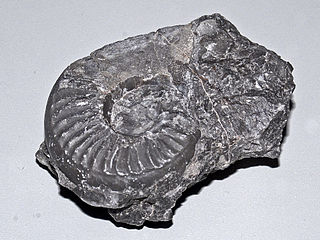
Pleuronautilus is a nautiloid genus; family Tainoceratidae, order Nautilida.

Gymnites is a genus of ammonoid cephalopod from the Middle Triassic belonging to the ceratitid family Gymnitidae. These nektonic carnivores lived during the Triassic period, the Anisian age.

Ceratitidae is an extinct family of ammonite cephalopods.

Paraceratites is an extinct genus of ammonite cephalopods in the family Ceratitidae.
Parapopanoceras is a ceratitid ammonite with a small, smooth, very involute and moderately globose shell that lived during the middle Triassic.
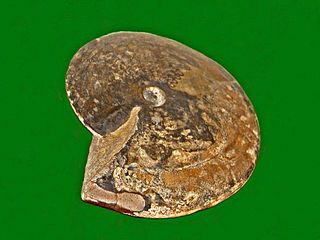
Hedenstroemia is an extinct genus of Early Triassic (Olenekian) cephalopods in the ammonoid order Ceratitida. They were nektonic carnivores.

Hedenstroemiidae is an extinct family of cephalopods in the ammonoid order Ceratitida. They were nektonic carnivores.
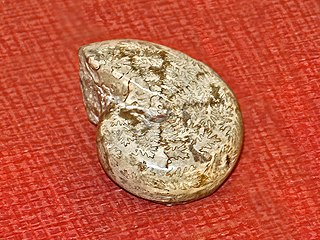
Cladiscites is an extinct genus of cephalopods in the ammonoid order Ceratitida. These nektonic carnivores lived during the Triassic, from Carnian to Rhaetian age.

Monophyllites is an extinct cephalopod genus belonging to the family Ussuritidae that lived during the Triassic period, from Anisian to Ladinian age.
Paraceratites elegans is an extinct species of ammonite cephalopod in the family Ceratitidae. It is known from the Triassic of China and Israel.

Brotheotrachyceras is a genus of ammonite cephalopod belonging to the order Ceratitida. It was living during the Carnian age of the Late Triassic Epoch.













